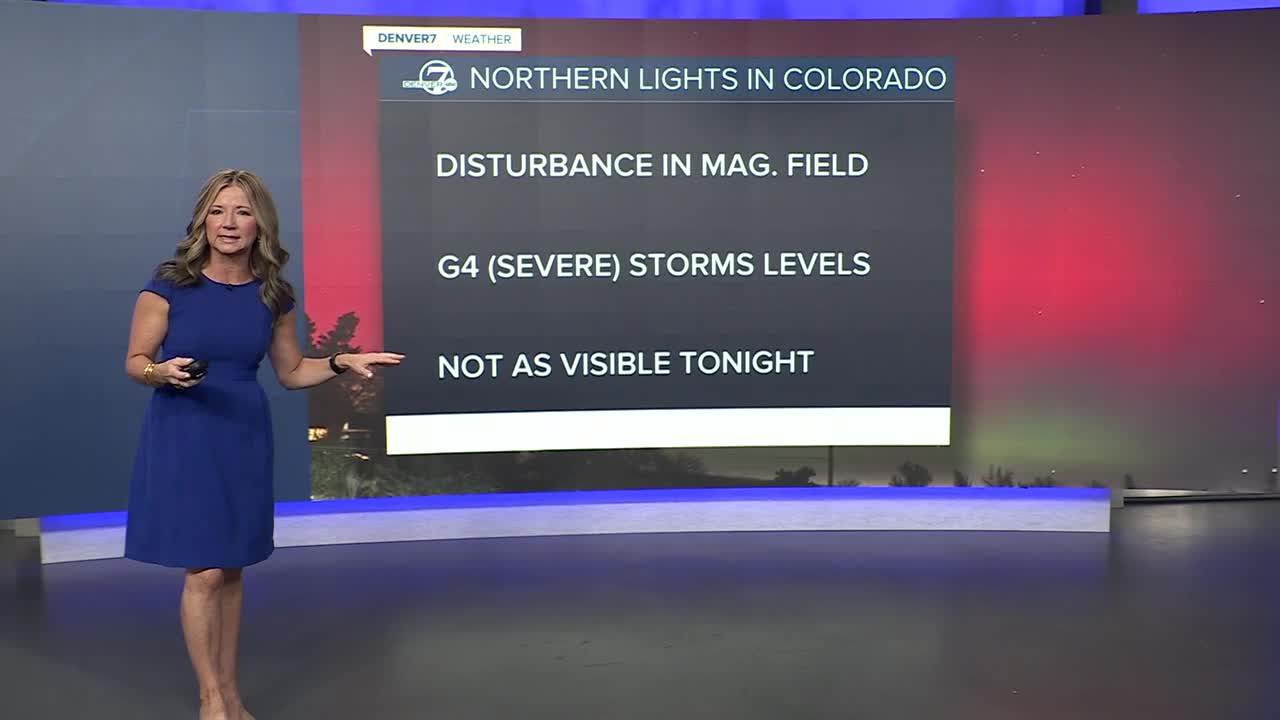After the aurora borealis lit up the Colorado sky in surreal swaths of color Tuesday night, there’s a chance stargazers in our state will see the northern lights again Wednesday night.
According to the National Oceanic and Atmospheric Administration Space Weather Prediction Center’s aurora forecast, the viewline dips into the northeasternmost portion of Colorado again Wednesday. The NOAA in a social media bulletin Wednesday afternoon said it was forecasting a severe G4 level geomagnetic storm – the same level we hit late Tuesday into Wednesday – that could be visible “maybe as far south as Alabama or southern California.”
G4 Watch continues into 13 November. We have seen the final CME arrive and are now waiting to see just how much magnetic energy exists within. We know the potential for another G4 exists, but we'll have to wait for any related warnings. Stay aware at https://t.co/TV7Yw6Lq1Y pic.twitter.com/LO1eCEA39O
— NOAA Space Weather Prediction Center (@NWSSWPC) November 12, 2025
The colorful lights in the sky are a result of what's called a coronal mass ejection, where particles from the sun are literally ejected toward Earth. Jennifer Hoffman, a professor in the Department of Physics and Astronomy at the University of Denver and the director of the Chamberlin Observatory, said it can be hard to pinpoint the exact time we'll be able to see them.
The NOAA has a slightly more scientific measure of geomagnetic activity called the Kp index, which measures geomagnetic activity on a 9-point scale, with an index of 8-9 indicating a major storm.
According to NOAA data, the Kp index reached 7.33 between 8 and 11 p.m. Mountain Time Tuesday. It reached 8.00 in the late morning hours Wednesday, and was forecast to be above 6 – at least a moderate storm – between 5 p.m. and 2 p.m.

Cloudy skies and light pollution could pose a problem for some Coloradans, as the NOAA is forecasting 64% cloud cover over Denver at 11 p.m. Wednesday with higher totals just to the west of town.

The northern lights will be most visible away from city lights with clearer skies. While photographers all over the state shared amazing shots of the auroras Tuesday – and the celestial show was visible as far south as Texas and Florida – some of the most spectacular colors were captured in the mountains. You can check a light pollution map to get a sense of where the clearest conditions might exist.

Denver7 | Weather
Northern lights put on dazzling show across Colorado Tuesday night
If it feels like the northern lights have been more common recently, Hoffman said you're on the right track.
"We're in a very active phase with the sun right now," she said.
The sun's magnetic field goes through a roughly 11-year cycle of activity, with each cycle's peak lasting roughly 1 to 2 years, Hoffman said.
"We're still in the peak of it, where there is a lot of activity, there's a lot of changes on the solar surface, and it is sending out many of these eruptions," she said.
NASA satellites that monitor the sun's activity can give us some warning here on Earth of when a strong geomagnetic storm may reach us – but conditions like weather, the time of day or night and the brightness of the moon all have to align for excellent visibility to occur, Hoffman said.




